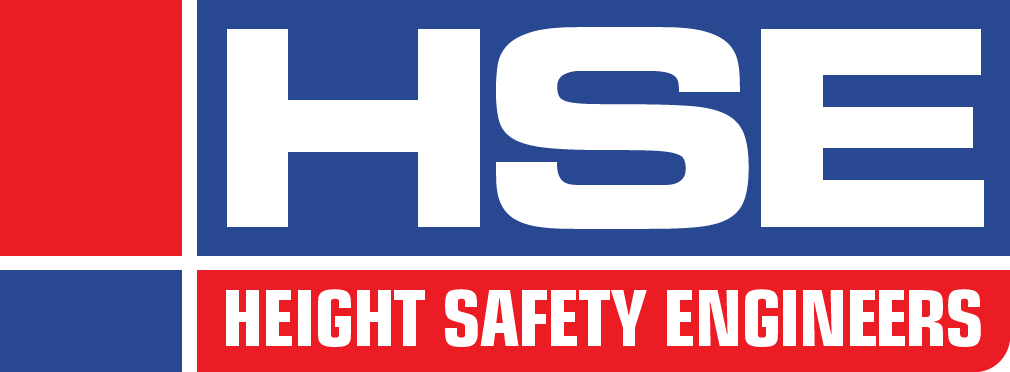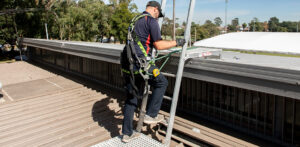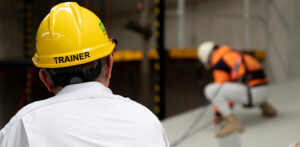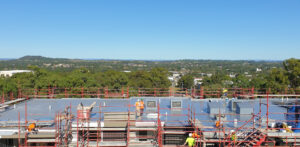When considering purchasing an existing commercial or industrial building, ensuring it comes with a compliant height safety system is an important part of due diligence.
The potential purchase or acquisition of a building or facility is a significant undertaking. The same applies when considering undertaking a commercial tenancy in a new location.
Amongst all the normal aspects that go along with completing such a transaction, purchasers and tenants must also that make sure that any fall risk areas have mitigations in place to protect workers.
Safe access and fall protection systems are often in place that are out of sight and, as a result, out of mind. Meaning that the potential for an accident to occur is greater than it might otherwise need to be.
What to look for
When considering acquiring or moving into a new location, there are a couple of simple things that a purchaser or tenant should look for as part of their due diligence processes.
Firstly, check if there are any compliance certificates that have been issued for a height safety system or a report that details any potential defects or limitations in a system.
When inspecting the building or facility, a check for the information signage at the entry to every area a fall protection system is present. These notices provide information about the system, including its load ratings and maximum number of users. They can also show when the system last went through a compliance inspection.
Checks should also be completed on the system itself, looking to make sure that what is installed on the building in the fall risk areas matches what is stated in the system’s documentation.
What to ask the vendor
There are also a few questions that should be asked of the vendor or current owner that can be used to assist in assessing the state of the building’s safe access and fall protection systems.
Primarily, the purchaser or potential tenant should be making enquiries as to plant and equipment located in areas of fall risk, the frequency at which it may need to be accessed, and whether this is by the tenant, new owner, or a third-party contractor.
Following from that, what the means of accessing those areas are, and what fall protection systems are in place to allow work to be carried out safely.
Gaining an understanding of when the most recent compliance inspection was undertaken is also important. This will assist in understanding whether the system is compliant and safe to use.
Finally, information about any known system limitations or areas that cannot safely be accessed should be sought. Knowing these areas, can go a long way in helping a new owner or potential tenant go about making sure that no workers are accessing unsafe areas from the moment possession of the building is taken.
Resolving issues
Ultimately, responsibility for ensuring that all safety systems and risk mitigation processes are in place is the responsibility of the building owner at the time work is undertaken. How the rectification or repair work to a safety system is managed during the sale of a building is down to what is agreed between the vendor and purchaser.
Systems that have not had a regular compliance inspection within the last 12 months should have one scheduled as soon as practicable. This process is important for making sure that fall protection and safe access systems are in good condition prior to workers entering areas of a fall risk.
For a purchaser that is unsure of where fall risks may exist on the building or site, a safety audit can be of assistance in identifying, assessing, and mitigating otherwise unknown areas of fall risk.
Plans, procedures, manuals, and other documentation can also be created to suit an existing system, if they do not exist already.
Planning for the future
Even if a safety system is installed on a building, is compliant and all relevant documentation is available, there is still more to consider for the purchaser of the building.
Maintaining a system’s compliance is critical to ensuring that workers are protected against the risks of a fall, and that the PCBU’s liability is minimised should an accident occur.
Fit out work undertaken in a newly purchased building can result in a safety system being compromised if it is damaged or altered.
The installation of new plant and equipment, especially on roof areas, may mean that an existing system needs to be modified or expanded. Equipment and plant often require its own regular maintenance, and an existing system may not allow safe access to the area it is located in.
Finally, the new owner or occupier of a building should make sure that any existing height safety system maintains its compliance by scheduling regular compliance inspections at suitable intervals. These inspections are critical for ensuring that safe access and fall protection systems are kept in good working order and will function as intended while workers are undertaking tasks in areas of high risk.
Advice from the experts
Getting a complete understanding of risks and responsibilities when it comes to height safety can be tricky. Height Safety Engineers have been working for more than two decades in protecting people working at height and in high-risk environments.
Ask your safety questions to our team of experts and get the answers you need to keep your team safe. Call us on 1300 884 978 or email enquiries@heightsafety.net.





